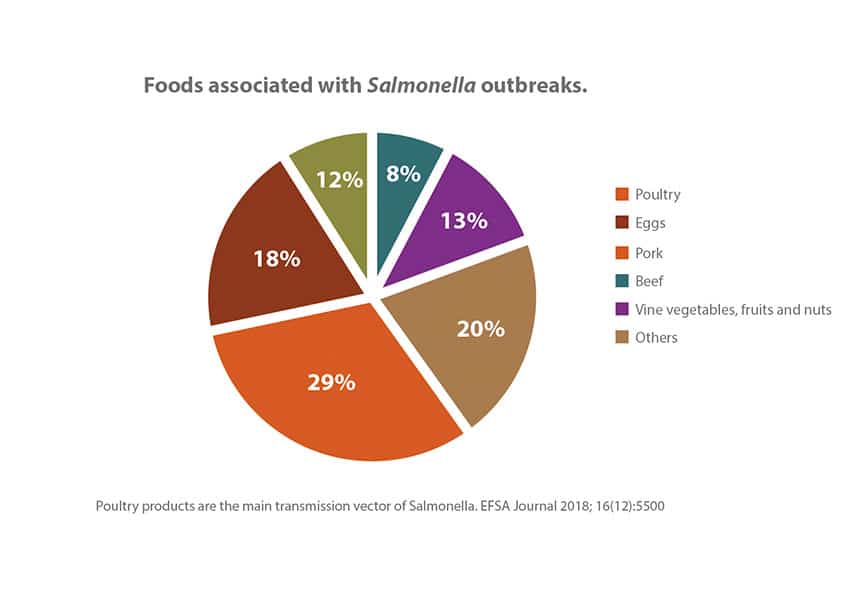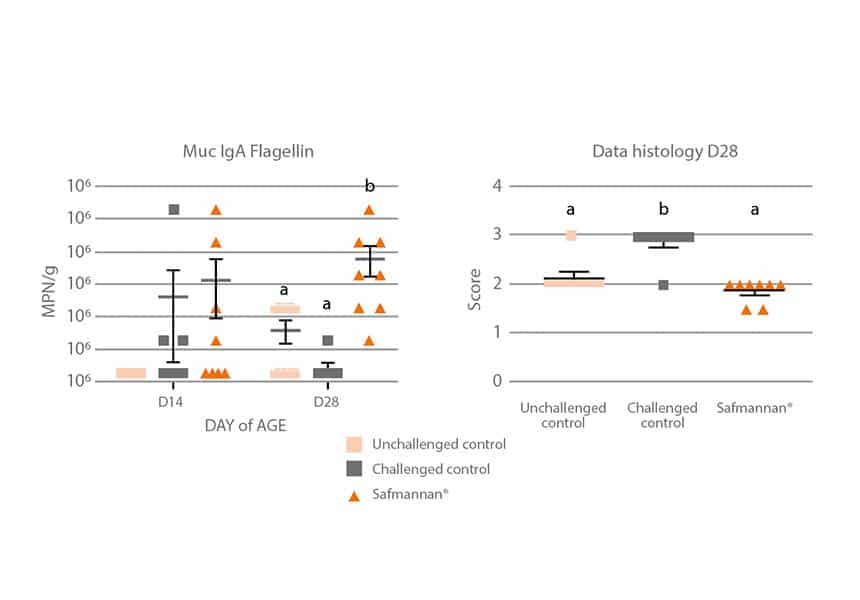Salmonella control in broilers to improve food safety
Salmonella is responsible for approximately 1 million foodborne illnesses a year in the US and 91,000 in Europe. Salmonella contamination is a global issue in poultry production. Interventions are applied in processing plants to reduce the contamination of poultry products, although the real solution is to prevent the arrival of contaminated broilers, turkeys or eggs in processing plants in the first place. Prevention at farm level is very important in reducing the risk of poultry meat or table egg contamination..

Salmonella contamination in poultry farms
Salmonella can come from feed: through additives and thermisation
Salmonella can linger in poultry houses, which remain contaminated from a previous batch of birds and are poorly disinfected, or contaminated because of rodents, insects etc.
Salmonella can arrive with contaminated day-old chicks, after vertical transmission in the egg or by the contamination of the egg shell when passing through the cloaca.
Reducing Salmonella pressure in the gut
Safmannan® contains high concentrations of mannans and beta-glucans. Mannans have the capacity to bind salmonella which may contribute to reduce pathogen pressure and faeces excretion.
Beta-glucans and mannans may help to modulate the immune function, with higher IgA antibody levels at the surface of the gut epithelium targeting Salmonella.
Safmannan® may help to preserve tight junctions for less Salmonella translocation from gut content to deep organs, such as the liver, spleen, or even the ovary grape (relevant for layers and breeders).
Trials with Safmannan®
A 2018 trial by C. Hofacre in SPRG, based on a 40-pen study, involved placing 2000 chicks into 5 treatment groups. The trial featured Safmannan® at different doses and a commercial yeast culture product. 25 day-old chicks per pen were tagged, colour-coded, and orally gavaged with 5×107 CFU of Salmonella Heidelberg. 25 more chicks (contact birds) per pen were not challenged, thus being potentially contaminated by the challenged chicks.
Birds supplemented with Safmannan® at 500 g/T showed a significant reduction in the number of S. Heidelberg in the ceca of contact birds at D42, using the Most Probable Number (MPN) method.
Safmannan® helps the immune system be more efficient against Salmonella
A 2019 trial by Imunova, Brazil, involved 35 day-old birds, assigned to 3 treatment groups: non-challenged/non-supplemented; challenged/non-supplemented; and challenged/supplemented with Safmannan® at 250 g/T from D1 to D28. The challenge of 108 CFU of Salmonella Typhimurium was given orally on D2 .
Safmannan® may help the immune system to produce more secretory IgA against LPS and Flagellin of Salmonella at day 28. Moreover, the histopathology score was significantly reduced at day 28.
Fill in this form to download your guide
Strategies to reduce Salmonella prevalence in the poultry industry



















